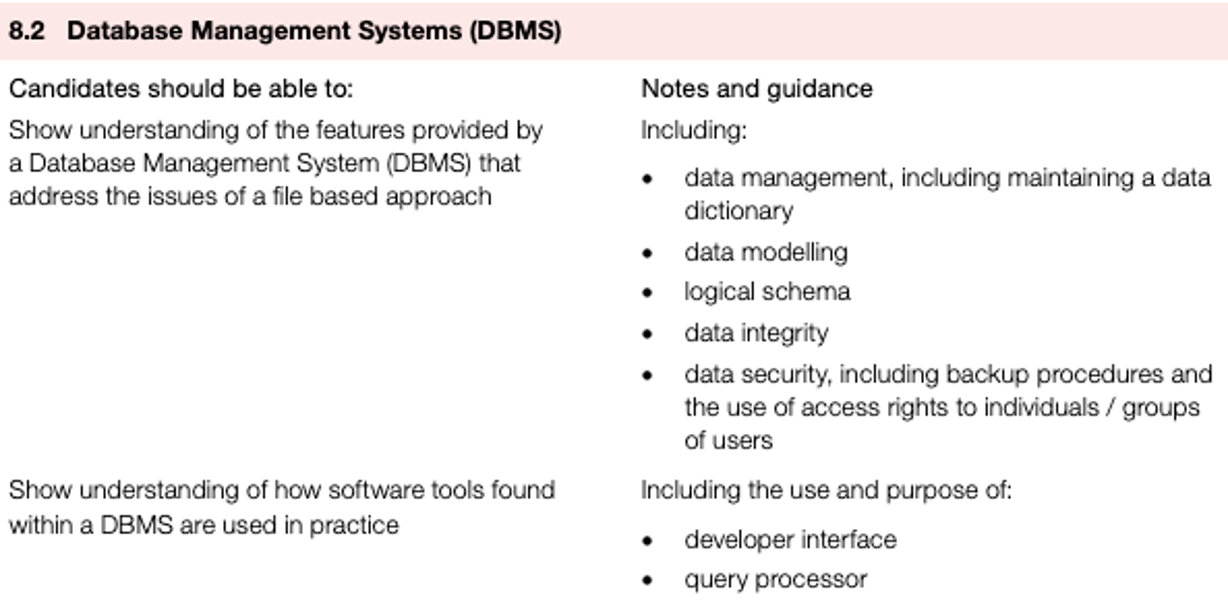Database Management System (DBMS)

How a DBMS addresses the limitations of a file-based approach
Data redundancy issue
- This is solved by storing data in separate linked tables, which reduces the duplication of data as most items of data are only stored once.
Data inconsistency issue
- This is also solved by storing most items of data only once, allowing updated items to be seen by all applications.
Data dependency issue
- Data is independent of the applications using the database, so changes made to the structure of the data will be managed by the DBMS and have little or no effect on the applications using the database.
Database
How a DBMS addresses the limitations of a file-based approach?
The DBMS approach
- A DBMS uses a more structured approach to the management, organisation and maintenance of data in a database.
- An already-defined data structure can be used to set up and create the database.
- The entry of new data, the storage of data, the alteration and deletion of data are all managed by the DBMS.
- A DBMS uses a data dictionary to store the metadata, including the definition of tables, attributes, relationships between tables and any indexing.
- The data dictionary can also define the validation rules used for the entry of data and contain data about the physical storage of the data.
- The use of a data dictionary improves the integrity of the data stored, helping to ensure that it is accurate, complete and consistent.
Database
A DBMS uses a to store the metadata, including the definition of tables, attributes, relationships between tables and any indexing.
Data modelling
Data modelling is an important tool used to show the data structure of a database.
An E-R diagram is an example of a data model.
A logical schema is a data model for a specific database that is independent of the DBMS used to build the database.
A DBMS helps to provide data security to prevent the unwanted alteration, corruption, deletion or sharing of data with others that have no right to access it.
Security measures taken by a DBMS can include
- using usernames and passwords to prevent unauthorised access to the database
- using access rights to manage the actions authorised users can take, for example, users could read/write/delete, or read only, or append only
- using access rights to manage the parts of the database they have access to, for example, the provisions of different views of the data for different users to allow only certain users access to some tables
- automatic creation and scheduling of regular back-ups
- encryption of the data stored
- automatic creation of an audit trail or activity log to record the actions taken by users of the database.
Database
is an important tool used to show the data structure of a database.
The use and purpose of DBMS software tools
Developer interface
- The developer interface allows a developer to write queries in structured query language (SQL) rather than using query-by-example.
- These queries are then processed and executed by the query processor.
- This allows the construction of more complex queries to interrogate the database.
Query processor
- The query processor takes a query written in SQL and processes it.
- The query processor includes a DDL interpreter, a DML compiler and a query evaluation engine.
- Any DDL statements are interpreted and recorded in the database’s data dictionary.
- DML statements are compiled into low level instructions that are executed by the query evaluation engine.
- The DML compiler will also optimise the query.
Database
The allows a developer to write queries in (SQL) rather than using query-by-example.